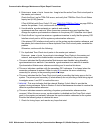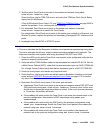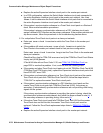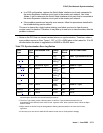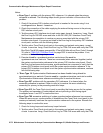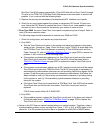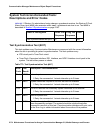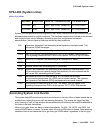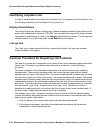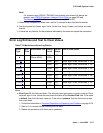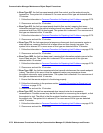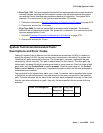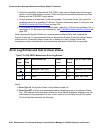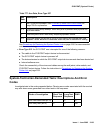
Communication Manager Maintenance-Object Repair Procedures
2176 Maintenance Procedures for Avaya Communication Manager 3.0, Media Gateways and Servers
Identifying a System Link
In order to trace problems associated with a system link, it is necessary to find its location. Use
the following methods to find the location of the system link.
Display Errors/Alarms
The output of display errors or display alarms shows the location of the system link for
entries with a Maintenance Name of SYS-LINK. You can restrict the scope of the output of these
commands by specifying sys-link in the Category field on the input screen. The link type and
channel number, if any, are listed under the Alt Name field of the report.
List sys-link
The list sys-link command lists every system link (location, link type, and channel
number) present in the system.
Common Procedure for Repairing Link Problems
The state of a system link is dependent on the state of the various hardware components that it
travels over. To resolve any problems associated with a system link, use the following
procedure.
The switch maintains a list of hardware components over which the link travels, called the
hardware path. There are two hardware paths: the current hardware path and the faulted
hardware path for each of the system links. The current hardware path is present only for those
links that are currently up. When a link is down, the current hardware path is empty. The faulted
hardware path is always present once the link has gone down, and is not cleared when the link
subsequently recovers. The faulted path preserves the path that the link traversed when it last
went down. The time at which the faulted path was last recorded is preserved and is accessible
through status sys-link location and list sys-link. Therefore, the focus of
attention for problems which do not involve a link that is down is the current hardware path. If
the link is down, faulted hardware path is the focus of attention.
The status sys-link location command shows the state of both the hardware paths
(current and faulted) along with the state of each of the components in the hardware path. When
analyzing any system link problem:
1. Look for alarms on the components listed under desired hardware path.
2. If any alarms are present, then follow the maintenance procedures for the alarmed
components to clear those alarms first.



